If you are looking for a recipe that uses chicken skin, be sure to try Torikawa Ponzu. Here, I will share two ways to make it: one that preserves the texture and flavor of the chicken skin, and another that makes it crispy. (The photo shows the version with the softer texture.)
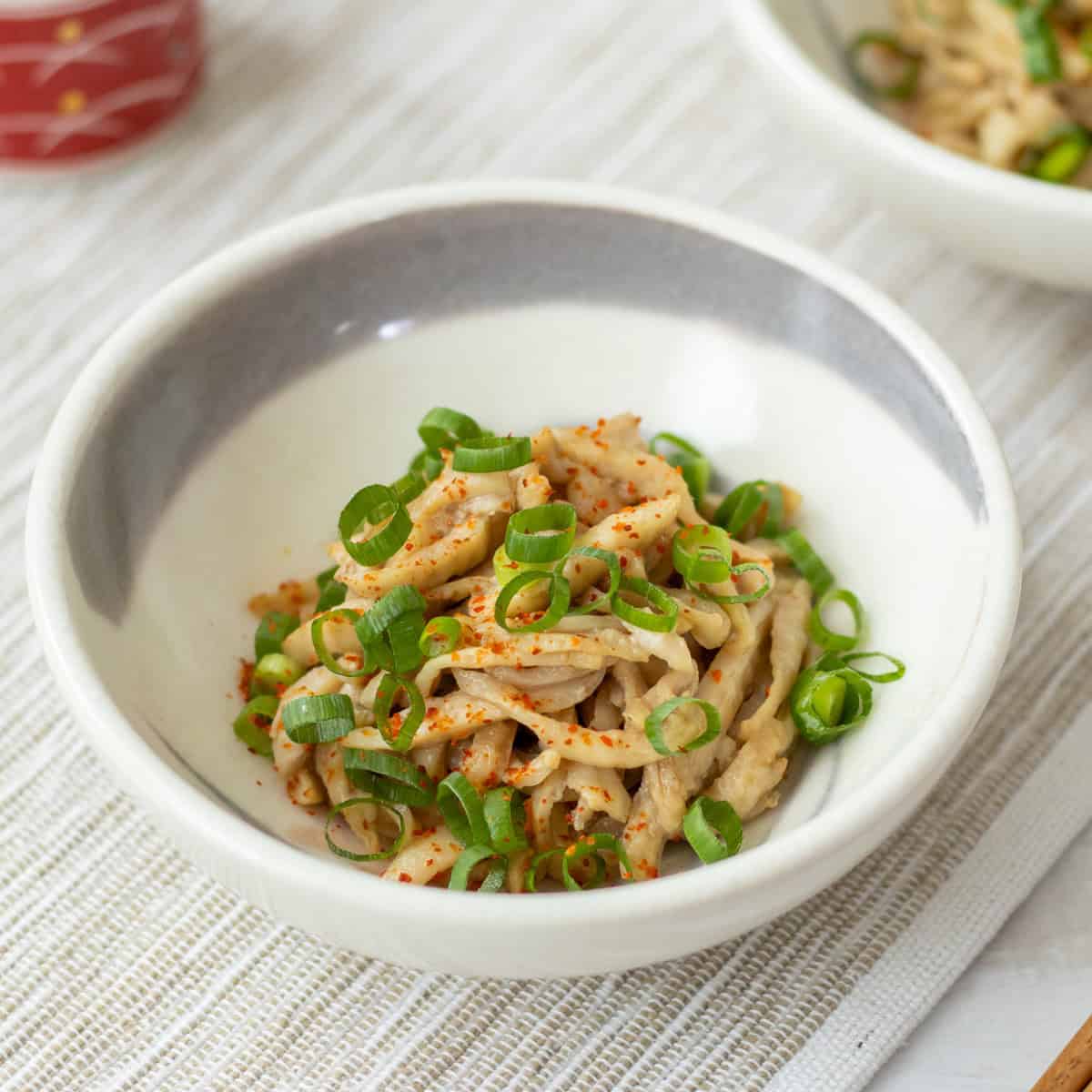
Jump to:
What is Torikawa Ponzu?
Torikawa Ponzu is a Japanese side dish made by cooking chicken skin and then tossing it with ponzu sauce. "Torikawa" means chicken skin, and "Ponzu" refers to a citrus-seasoned soy sauce. You can enjoy the texture and flavor of the chicken skin combined with the refreshing taste of the ponzu.
While it can be enjoyed on its own, in Japan, it is commonly served with condiments such as thinly sliced green onions or grated daikon radish. Another popular way to enjoy it is by mixing it with thinly sliced onions that have been soaked to mellow their sharpness. Both styles are staples on izakaya (Japanese pub) menus and are popular side dishes, often enjoyed with alcoholic drinks.
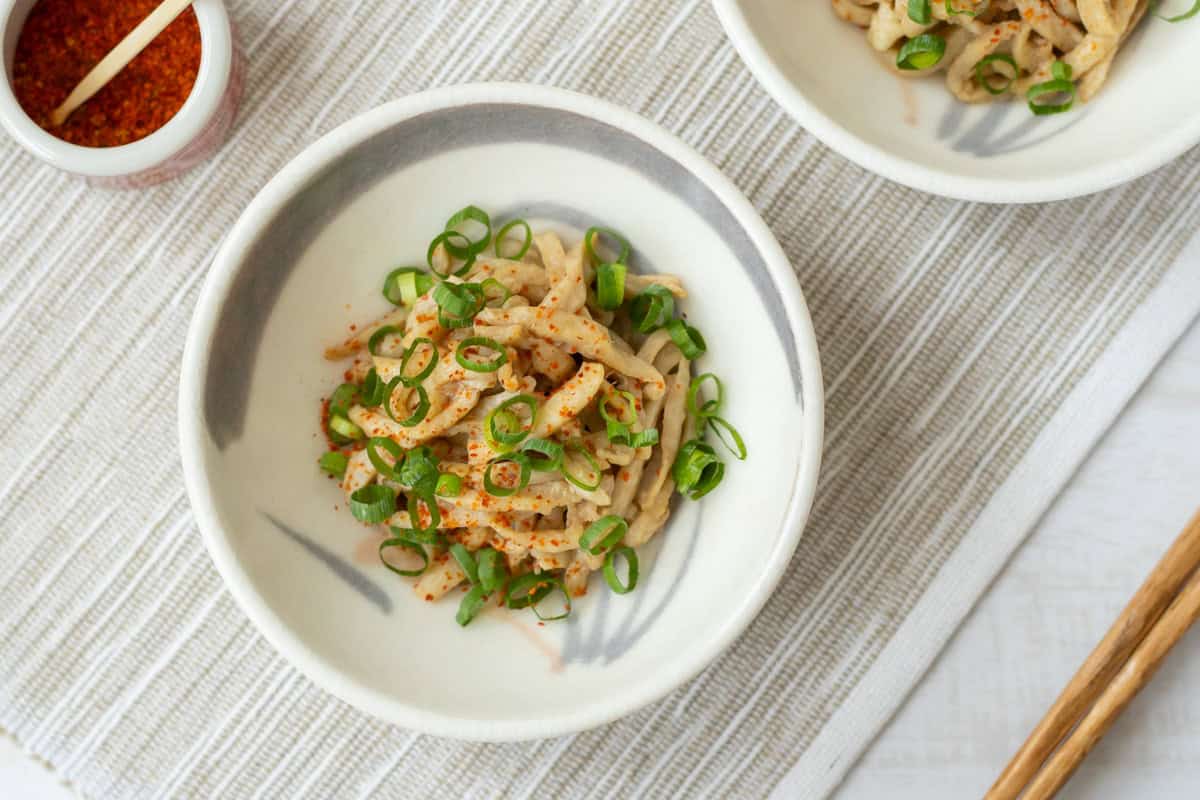
Two cooking methods
This dish can be prepared using two cooking methods: boiling and frying.
When boiled, you can enjoy the unique texture of chicken skin while retaining its flavor. This is the most common cooking method—it is quick to prepare and pairs well with ponzu sauce. Cutting the chicken skin into thin slices makes it easier to eat and enhances its compatibility with ponzu.
On the other hand, frying gives the chicken skin a crispy, chip-like texture. It is a good option for those who don’t like the slippery texture of chicken skin. Additionally, it is especially suitable if your main goal is to render chicken fat, as described in the section below.
The overall impression of the dish changes significantly depending on the cooking method. If you are unsure which method to try first, I suggest starting with the boiling method, as it is more popular in Japan.
Preparing chicken skin in advance
To prepare torikawa ponzu, you will need to save chicken skin.
However, depending on how much chicken you typically use, you might find it challenging to gather enough chicken skin. In such cases, it is a good idea to freeze the chicken skin and store it for later use. It can be kept frozen for up to about a month.
Frozen chicken skin can be used directly without thawing. If you plan to boil it for this dish, it is best to keep it whole. If you intend to fry it, it is recommended to cut it into slightly larger, bite-sized pieces before freezing.
Rendering chicken fat
Torikawa ponzu is also known for rendering chicken fat during cooking, as chicken skin contains a large amount of fat.
The rendered chicken fat can be used in various dishes. In Japan, it is commonly used in authentic ramen, fried rice, and stir-fried vegetables.
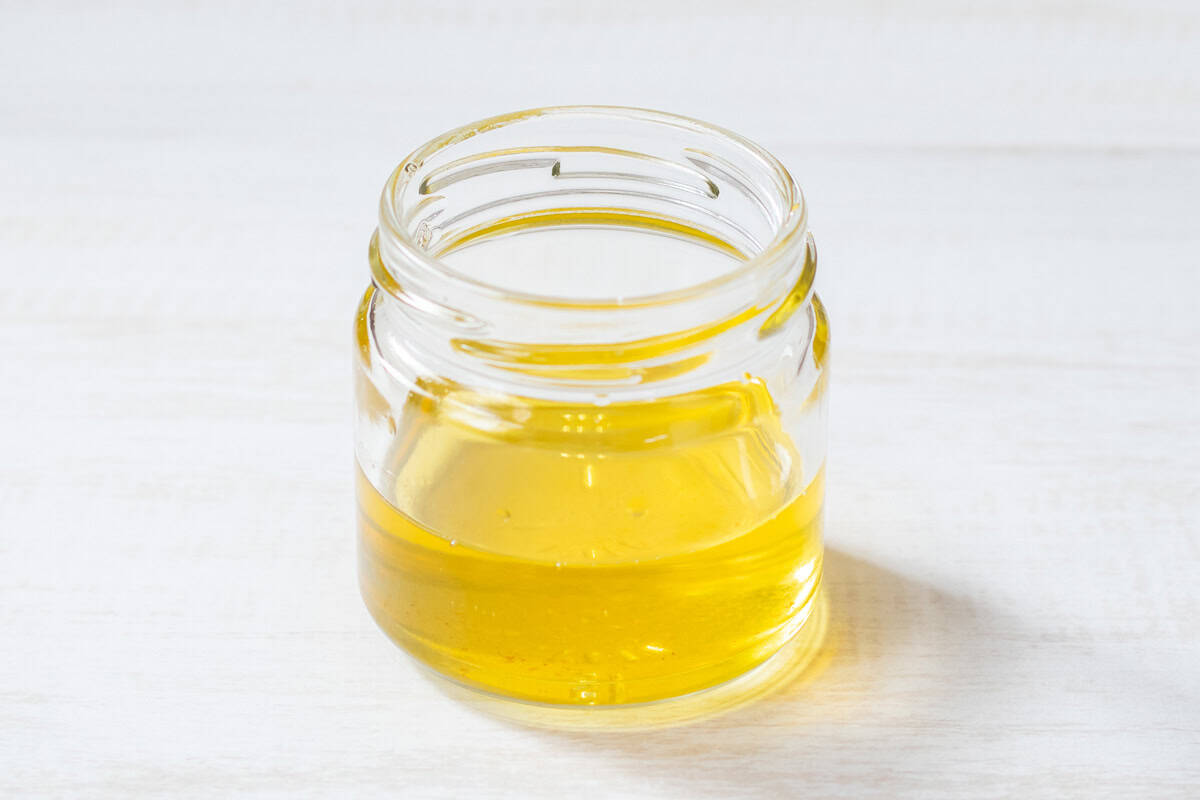
The extraction process depends on whether the dish is prepared by boiling or frying.
When boiling, skim off the fat that rises to the surface. The skimmed fat contains moisture, so it should be placed in a jar and refrigerated until it solidifies. After it has solidified, discard the water that has settled at the bottom of the jar. While my recipe suggests boiling the chicken skin for 5 minutes to retain its flavor, if your primary goal is to render chicken fat, you should simmer it over low heat for about an hour.
When frying, simply spoon out the rendered fat as the chicken skin cooks. Adding the green parts of leeks or the root ends of onions about 5 minutes before the chicken skin finishes frying can help reduce the smell of chicken fat.
Both methods yield chicken fat, but if your main goal is to render it, frying is preferable. This method produces fat without excess moisture, making it more flavorful, and it also requires less effort and time to prepare.
Of course, you don't have to collect the chicken fat. However, since it is a great opportunity to obtain high-quality fat, you might want to consider using it rather than throwing it away.
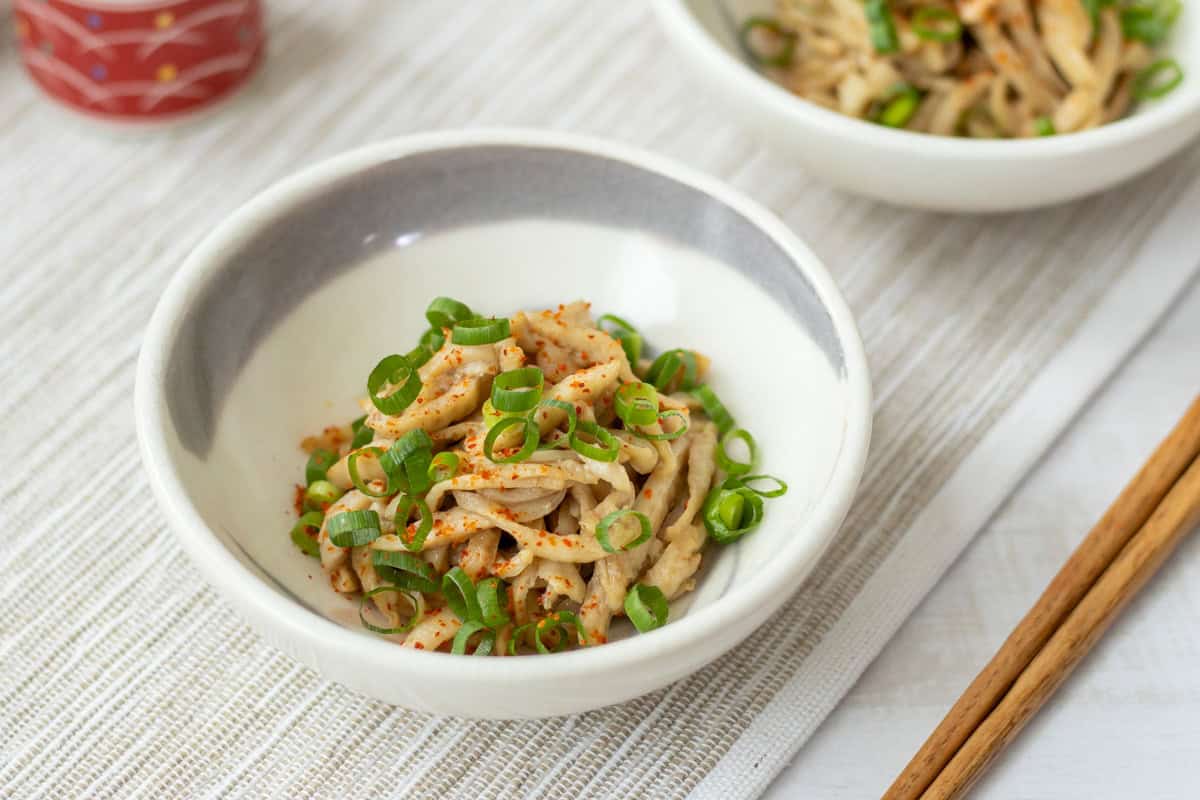
📋Step-by-step recipe
Ingredients
- 5.3 oz chicken skin (Remove any yellow fat or feathers, if present.)
- 2 cups water (for the boiling method)
- 1 tsp sake (for the boiling method)
- 1 Tbsp ponzu sauce (a citrus-seasoned soy sauce)
Toppings:
- green onions / scallions (thinly sliced)
- shichimi togarashi (Japanese seven-spice chili powder)
Instructions
🕒 Total: 10 minsBoiling method:
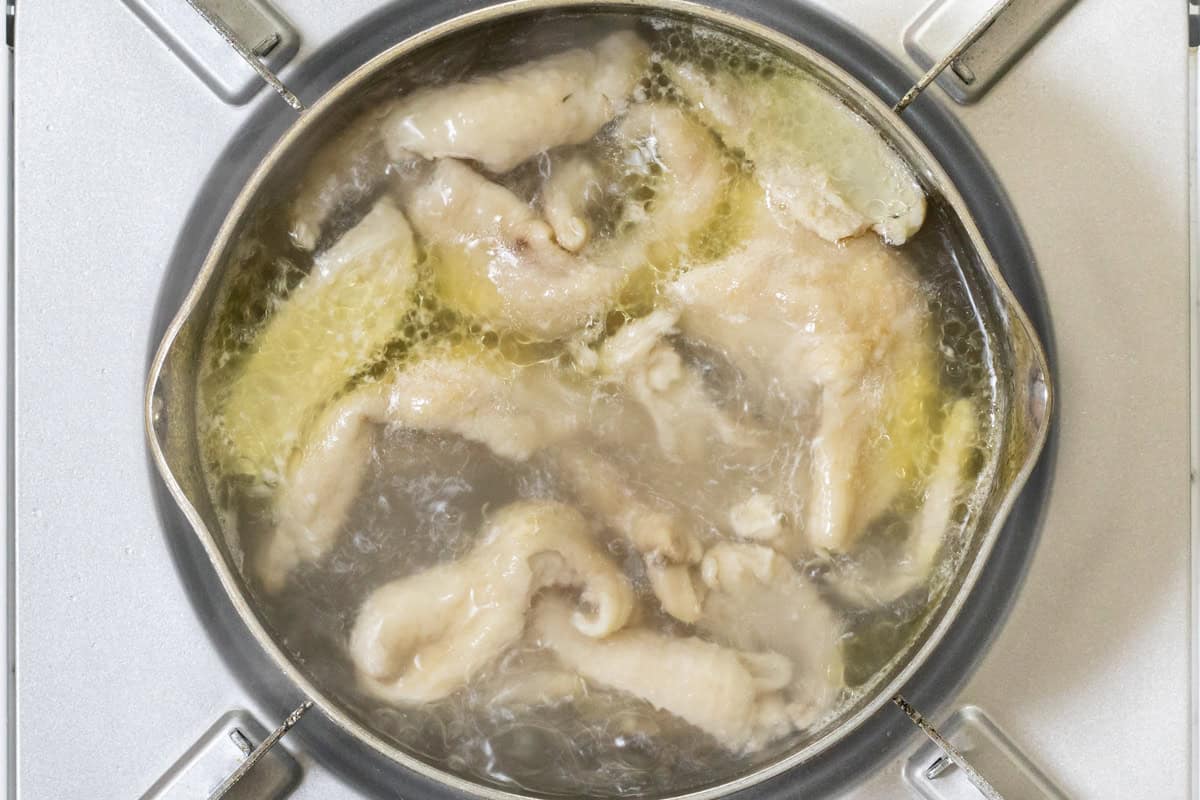
Step 1
Bring a pot of water to a boil. Add the chicken skin and sake, then simmer over medium heat for 5 minutes.

Step 2
Drain the chicken skin in a colander and rinse it under running water to cool. Pat it dry with paper towels, then cut it into thin strips.
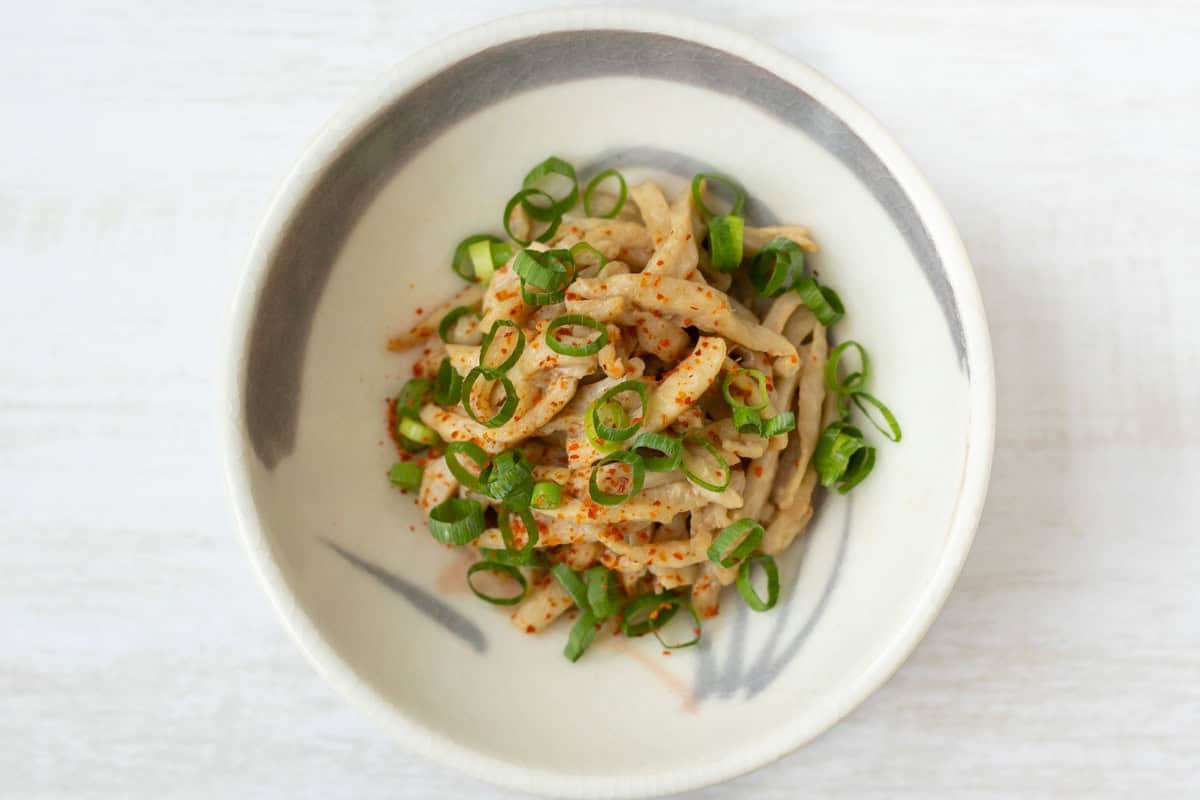
Step 3
Place the strips in a bowl and toss them with ponzu sauce. Top with green onions and shichimi togarashi to taste.
Frying method:
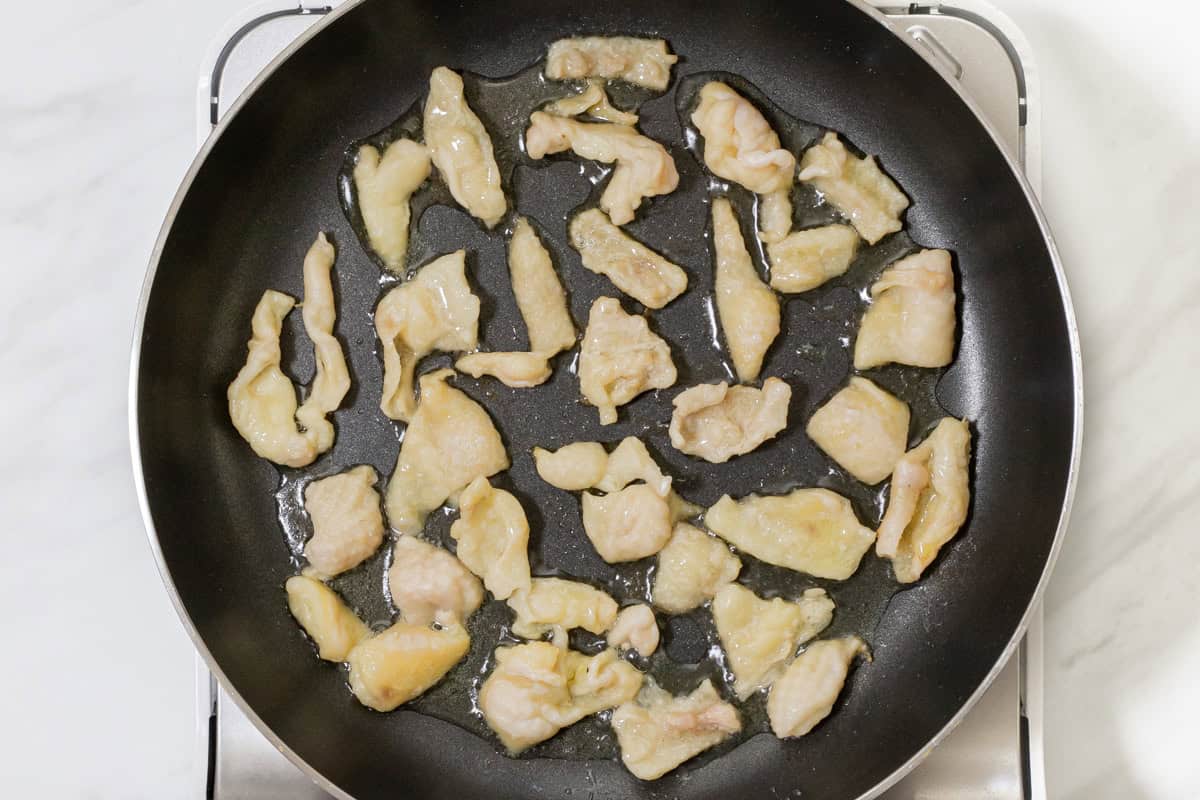
Step 1
Cut the chicken skin into slightly larger, bite-sized pieces. Place them in a pan in a single layer without adding oil. Cook over low heat for about 30 minutes, flipping occasionally to prevent burning.

Step 2
Transfer the pieces to a bowl and toss them with ponzu sauce. Top with green onions and shichimi togarashi to taste.
To store
You can store it in the refrigerator for up to 3 days.

If you try this recipe, I’d love to hear what you think. Please consider leaving a review and star rating in the comments below. If you enjoyed it, I’d really appreciate it if you shared it with your friends.
More recipes you'll love
Recipe card

Torikawa Ponzu (Japanese Chicken Skin)
Ingredients
- 5.3 oz chicken skin (Remove any yellow fat or feathers, if present.)
- 2 cups water (for the boiling method)
- 1 tsp sake (for the boiling method)
- 1 Tbsp ponzu sauce (a citrus-seasoned soy sauce)
Toppings:
- green onions / scallions (thinly sliced)
- shichimi togarashi (Japanese seven-spice chili powder)
Instructions
Boiling method:
- Bring a pot of water to a boil. Add the chicken skin and sake, then simmer over medium heat for 5 minutes.
- Drain the chicken skin in a colander and rinse it under running water to cool. Pat it dry with paper towels, then cut it into thin strips.
- Place the strips in a bowl and toss them with ponzu sauce. Top with green onions and shichimi togarashi to taste.
Frying method:
- Cut the chicken skin into slightly larger, bite-sized pieces. Place them in a pan in a single layer without adding oil. Cook over low heat for about 30 minutes, flipping occasionally to prevent burning.
- Transfer the pieces to a bowl and toss them with ponzu sauce. Top with green onions and shichimi togarashi to taste.
Notes
- When frying, the total cooking time is about 32 minutes.
- The Nutrition Facts label assumes that you consume all the fat from the chicken skin.
- You can store this dish in the refrigerator for up to 3 days.

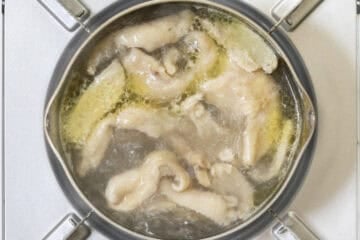
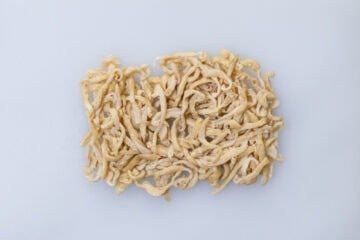
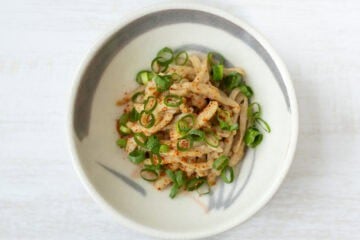
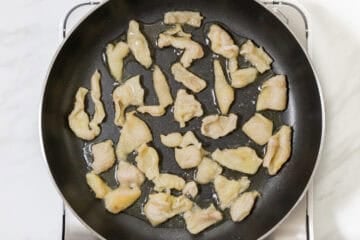
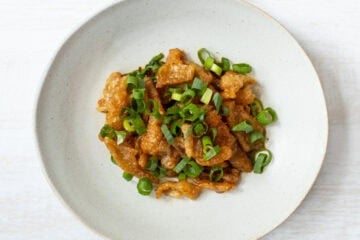
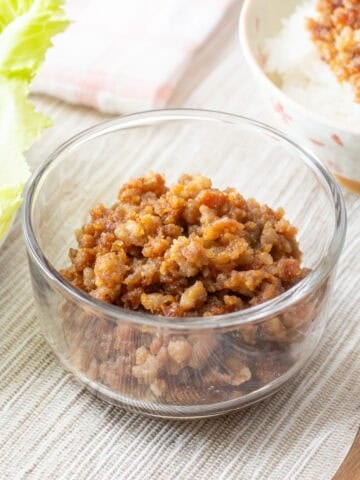
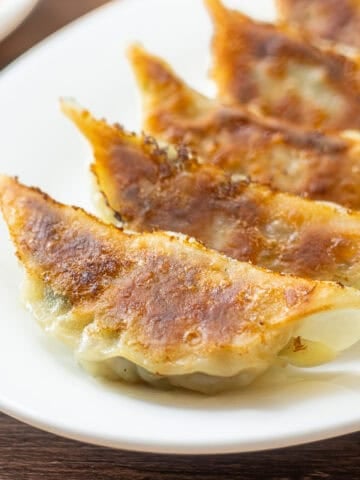
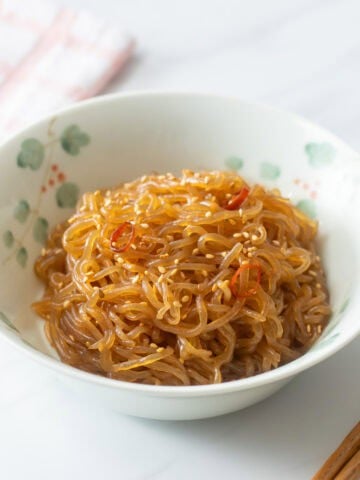
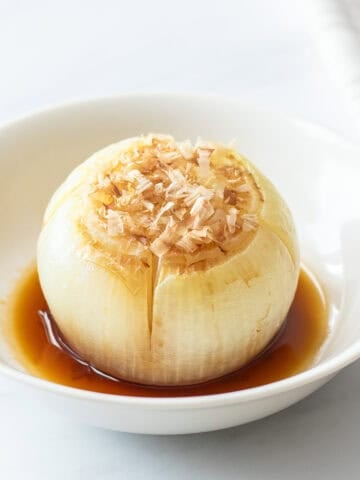
Leave a Rating and a Comment